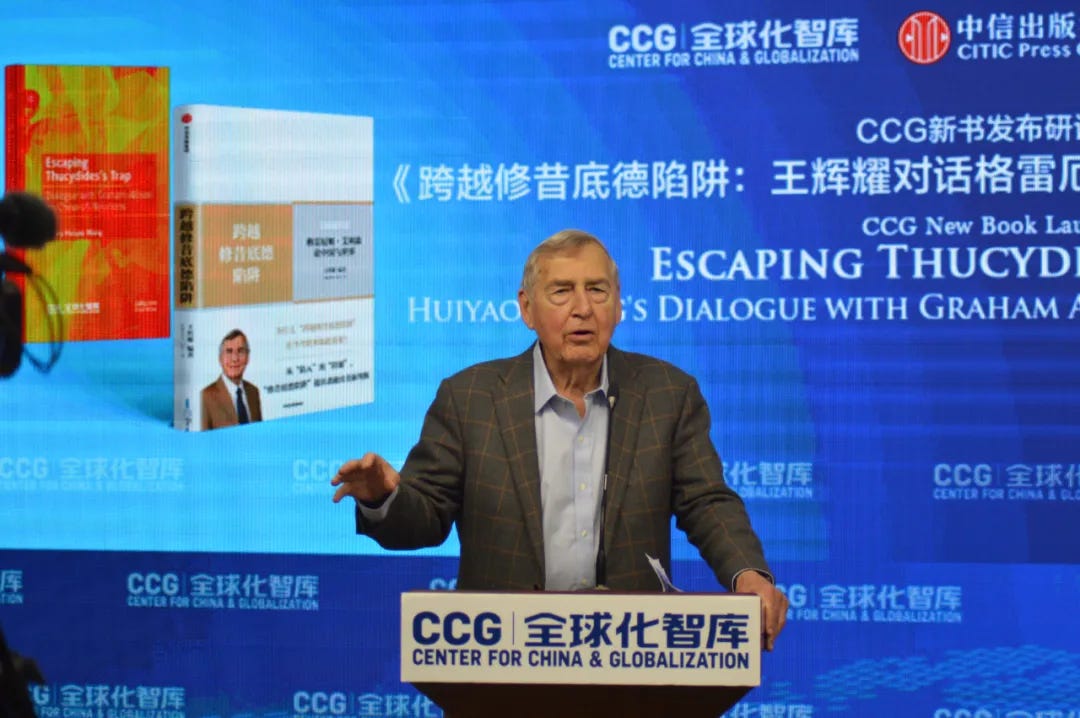
Seven years ago, following the release of Graham Allison’s notable book on the Thucydides Trap, many thought it inevitable that China and the United States would drive down a collision course. But on his recent trip to China, the Harvard scholar, still intent on proving a point with historical parallels, turned to another story — one by Chinese military strategist Sun Tzu.
During the Spring and Autumn Period (770-481 BC), so the story goes, Wu and Yue were two independent states on adversarial terms but whose people, at one point, had to share a boat to cross a river. Reluctantly, they set sail. At midstream they were caught up in a storm that threatened to capsize the boat. It was then that they set aside their grudges and joined forces to steady the boat and safely get to shore.
Addressing common challenges has been a recurring theme in the relationship between China and the United States. In the 1970s, despite their vast differences in ideologies, political systems and social traditions — and the fact that the U.S. maintained a military presence in Indochina — the geostrategic need to counter an expansive Soviet Union encouraged rapprochement.
But something larger than this necessity kept their cooperation going. As then U.S. President Jimmy Carter put it, diplomatic relations were established not for “transient tactical or expedient reasons” but for the long-term peace and prosperity of the two countries and the wider world.
Gaining access to Chinese products at fair prices helped to stabilize consumer prices in the United States. Americans got more value for their money. Some estimates put the resultant average savings of American households at $850 per year. American exports to the massive Chinese market supported more than a million jobs for U.S. workers. The Chinese were happier too. They embraced with open arms Coca-Cola, Nike shoes, Disney stories and Coach handbags. Many were proud to work in the offices of Accenture, GE and KPMG.
During stormy times, their cooperation proved a blessing for the world. In the aftermath of the 2008 financial crisis, cooperation anchored global expectations and facilitated a sustained recovery. During the Ebola outbreak in West Africa a decade ago, it delivered an on-the-ground global health intervention larger than either country had ever conducted on its own. As the Earth warms, it made possible a 2014 joint statement that set out ambitious emission reduction targets for both sides and paved the way for concluding the Paris Agreement a year later.
But then things began to sour. Over the past few years, the U.S. government took to painting China as a threat. Shifts occurred in Washington’s positions and actions. Beijing refused to back down, believing it had every right to grow stronger. So, just like the states of Wu and Yue in ancient times, they are once again at odds.
Unfortunately, the storms the world faces today are not fewer or less intense. They are stronger and increasingly borderless; hence the need for the two giants to pull together.
What’s more, the Wu and Yue story captures only a small part of the complex China-U.S. relationship. Cooperation between the two is not just for coping with temporarily choppy waters. It is more about sailing to more beautiful shores. China and the United States now account for more than one-third of the world economy. Imagine how they could power global growth if only they could synchronize their twin engines. The two countries are global leaders of cutting-edge technologies. Imagine the force they could jointly unleash to advance human progress and prevent AI from turning into Frankenstein’s monster. Both have extensive expertise in global governance. Imagine the chemistry if they could bring out the best of both Eastern and Western traditions to make the world a better place.
While the Thucydides Trap narrative promotes “us vs. them,” the Wu and Yue story presents the Eastern belief in partnerships — “You are in me, and I am in you” is the way Chinese President Xi Jinping put it. This doesn’t mean uniformity. China is clear-eyed about its many differences with the United States. The key is not to let those differences block the truth that cooperation remains the right choice for both.
The other passengers in the boat of Planet Earth are eagerly awaiting the United States and China doing the right thing.
